Monacor MAESTRO-1 Handleiding
Monacor
Niet gecategoriseerd
MAESTRO-1
Bekijk gratis de handleiding van Monacor MAESTRO-1 (18 pagina’s), behorend tot de categorie Niet gecategoriseerd. Deze gids werd als nuttig beoordeeld door 63 mensen en kreeg gemiddeld 4.6 sterren uit 32 reviews. Heb je een vraag over Monacor MAESTRO-1 of wil je andere gebruikers van dit product iets vragen? Stel een vraag
Pagina 1/18

USER GUIDE
Operating instructions for the Maestro are described in the installation guide shipped with the product.
2CONFIGURATION
The Maestro conguration is included in its µSD card.
The content of this card can be changed in order to modify the product conguration.
The original µSD card can be replaced with a customized and pre-congured card, by respecting recommendations and
explanations described in this document.
The card shipped with the product has a 4GB capacity. A card with a different capacity can be used.
The µSD card has folders, their names and the tree structure must be preserved.
These folders, with explicit names, hold several pre-recorded messages which can be easily replaced.
• the «Ambiance» folder holds the le which is permanently broadcast if this mode is enabled;
• the «Calendar» folder holds the different les which are used by the calendar, if this option is enabled;
• the «Carillon» folder holds the le which can be broadcast before a message or an announcement over the phone;
• the «Dtmf» folder holds the folders «1» to «9» with the les to broadcast for each dial number if this option is enabled;
• the «Examples» folder holds examples of conguration les and audio les;
• the «Message 1» folder holds the le to broadcast when triggering input contact 1;
• the «Message 2» folder holds the le to broadcast when triggering input contact 2;
• the «Message 3» folder holds the le to broadcast when triggering input contact 3;
• the «Message 4» folder holds the le to broadcast when triggering input contact 4;
• the «Message 5» folder holds the le to broadcast when triggering input contact 5;
• the «Message 6» folder holds the le to broadcast when triggering input contact 6;
• the «Test» folder holds the le to broadcast if the test button has been pushed;
The µSD card also has 2 specic les :
• the conguration le «conf.txt» which contains all the product’s parameters and settings (cf. §6)
• the le «time.txt» which allows to set the date and time for the product (cf. §6.10)
A le «info.txt» is also included in the µSD card, indicating the Maestro version plus the product date and time.
This le is updated at each product start-up and it should not be modied.
A le «error.txt» can also be found in the µSD card, in case of an error within the conguration le.
This le gives some details about the error with the name of the parameter and the error type.
1SYNOPTIC VIEW
MAESTRO-1
PA system
(Aux. or Line input)
Example : flashing light
Telecom remote
Power supply unit
Analog line (ex : PABX)
Contact 6
Contact 5
Contact 4
Contact 3
Contact 2
Contact 1

2/7
5MESSAGES
Messages from the Maestro can be triggered by one of the 6 input contacts (cf. §6.7), by a DTMF dial number (cf. §6.8), or
by a calendar schedule (cf. §6.11).
Whatever the triggering source, all messages have a list of common parameters which can be modied in order to ensure
the proper functioning.
• Broadcast repetition
The Maestro offers the possibility to repeat the broadcast of each message and to insert a delay between these repeti-
tions. This allows to repeat a message without having to create a specic digital audio le.
• Priority
The Maestro handles messages priority to decide on the action to take if a broadcast is already in progress.
If a message with higher priority is triggered, the message in progress is stopped and the new message, or the phone
announcement, will be broadcast instead.
By default, the test button message has the higher priority, followed by messages from input contacts 1 to 6 and DTMF
dial numbers 1 to 6, then DTMF number 7 to 9, next messages from the calendar and nally the phone announcement.
• Volume
The Maestro allows to adjust the volume for each message to broadcast.
Volume management is optional as the les included in the product have all been normalized. Furthermore, the product
has 2 front panel volume buttons, for the messages (MES.) and for the voice (VOI.) during a phone announcement.
Nevertheless, if a new message is used on the product and if its audio rendering need to be tuned with the other mes-
sages, it is possible to modify the volume parameters and/or the front panel volume in order to so.
• Output relays
The Maestro has 2 output relays, R1 et R2, which can be connected to the PA system in order to command or mix an audio
input, or to select a broadcast zone.
For each message, it is possible to activate relay R1, relay R2, or both R1 and R2. Relays can also be deactivated.
4DIGITAL AUDIO FILES
Messages are digital audio les with MP3 format (max : 256kb/s) or WAV format (max : 44kb/8 bits).
Each folder must contain one and only one digital audio le corresponding to the matching message.
Only the folder name matters. Filenames, in most folders, are free and not taken into account.
The «Calendar» folder is an exception because it holds all the les used by the calendar. Filenames are taken into account
in this folder. They are used in the calendar’s parameters (cf. §6.11).
The lename length («lename.mp3») must not exceed 50 characters.
3
TREE STRUCTURE OF THE MICRO SD CARD
Configuration file
Date/Time setup
Maestro information
Messages for the calendar
Messages for the DTMF option
Messages for input contacts 1 to 6
Message for test button
Message for ambiance mode
Message used as carillon
Files examples

3/7
6.1 OPERATING MODES
The Maestro has one of 2 main operating modes, selected by using the following parameter :
• 100; ; ;MODE 1
With the standard mode ( ), used , you just need to dial the Maestro number to make an announcement from 1by default
any phone. To end the announcement and disconnect the communication, you can hang up the phone or remain silent.
If you hang up the phone, a few busy tones will be broadcast throughout the PA system (cf. §6.6).
In this mode, you can trigger any of the 6 input contacts to broadcast the matching pre-recorded message.
It is also possible to program the automatic broadcast of messages using a calendar (cf. §6.11).
The Maestro handles messages priority if another message is already in process (cf. §5).
The ambiance mode ( ) broadcasts permanently the message held in the «Ambiance» folder.2
In this mode, all other functionalities are disabled and no other broadcast is allowed.
In the standard mode, and only in this mode, the DTMF option can alter the main operating mode :
• 110;DTMF_OPTION; ;0
By default, the DTMF option is disabled ( ).0
It the DTMF option is enabled ( ), then the phone announcement process is altered as dialling the Maestro number does 1
not automatically start the communication with the PA system.
Indeed, once the product has picked up, it waits for a DTMF dial to decide which action to perform :
- dial «0» to start the communication with the PA system and make an announcement from any phone;
- dial «1» to «9» to broadcast a pre-recorded message, held in the matching folder.
You can trigger any of the 6 input contacts as in the standard mode and the message priority handling is extended to the
DTMF messages : a message triggered by one of the input contacts or a DTMF dial, and which has a higher priority level,
will stop any message in progress and will be broadcast instead (cf. §5).
It is also possible to program the automatic broadcast of messages using a calendar (cf. §6.11).
6
CONFIGURATION FILE
The conguration le «conf.txt» gives access to all the product settings with a list of parameters using the format :
CODE;PARAMETER_NAME;VALUE;
The format of each line is important and omitting a semi-colon leads to an error on this parameter.
The code is essential to identify the parameter and this number must not be modied.
The parameter name is optional and can be modied by the user but it cannot be empty.
The parameter value must take one of the possible values. For each parameter, the list of values is described in this doc-
ument, but also in the «conf.txt» le itself, in parenthesis at the end of each line.
If an error occurs in one of the parameters, the warning LED (red) lights up and an «error.txt» le, describing this error, is
created in the µSD card. The warning LED (red) also lights up if the µSD card is pulled off.
In case of any error on a parameter, of a missing µSD card or if the conguration le «conf.txt» is deleted, default values
are used.
These default values are also used for any missing parameter in the conguration le, but in this case no error will be dis-
played. This choice has been made to propose shorter and simpler conguration les, containing only a few parameters.
6.2 AMBIANCE MODE
In the ambiance mode (cf. §6.1), the Maestro broadcasts permanently the message held in the «Ambiance» folder.
In this mode, all other functionalities are disabled and no other broadcast is allowed.
• 113; ; ;VOLUME_AMBIANCE 0
The ambiance message has a volume ( ) . Value 0 is for the maximal volume and 80 for the minimal volume.0by default
The audio output can also be tuned using the volume button (MES.) on the front panel.
• 114;RELAY_AMBIANCE; ;1
During the broadcast of the ambiance message, it is possible to activate output relays.
By default, output relay R1 is activated ( ) during the broadcast of the ambiance message.1
It is possible to activate relay R2 (2) or both relays R1 and R2 (3). Relays can also be deactivated (0).
Product specificaties
| Merk: | Monacor |
| Categorie: | Niet gecategoriseerd |
| Model: | MAESTRO-1 |
Heb je hulp nodig?
Als je hulp nodig hebt met Monacor MAESTRO-1 stel dan hieronder een vraag en andere gebruikers zullen je antwoorden
Handleiding Niet gecategoriseerd Monacor

17 Augustus 2024

28 Augustus 2023

1 Juli 2023

30 Juni 2023

30 Juni 2023

29 Juni 2023

28 Juni 2023

27 Juni 2023

24 Juni 2023

21 Juni 2023
Handleiding Niet gecategoriseerd
- Juwel
- Jean Louis David
- Bernina
- Pentax
- ARNOLD Lichttechnik
- PowerColor
- Denon DJ
- Proclip
- Emeril Everyday
- Fluke
- Elbro
- IOTAVX
- Miditech
- Varad
- Dracast
Nieuwste handleidingen voor Niet gecategoriseerd

31 Juli 2025
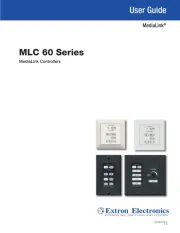
31 Juli 2025
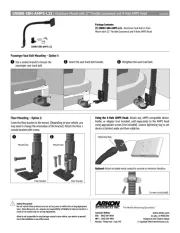
31 Juli 2025
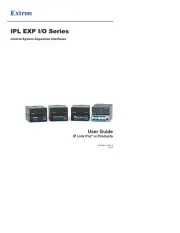
31 Juli 2025
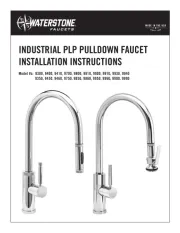
31 Juli 2025
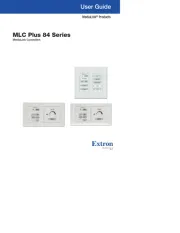
31 Juli 2025
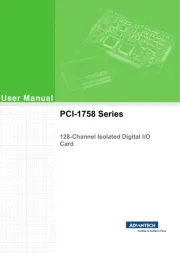
30 Juli 2025
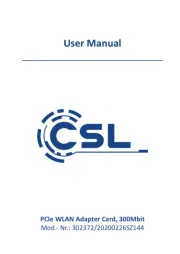
30 Juli 2025
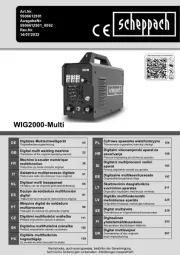
30 Juli 2025
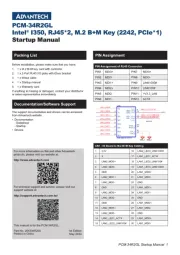
30 Juli 2025